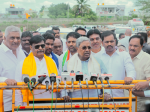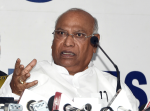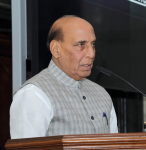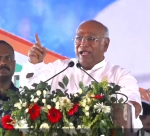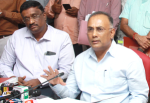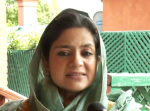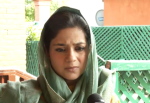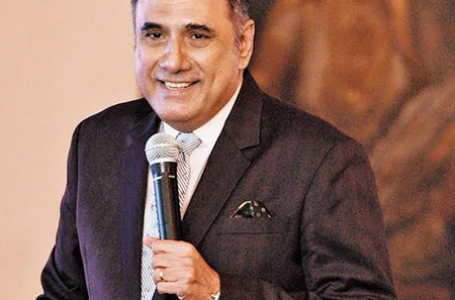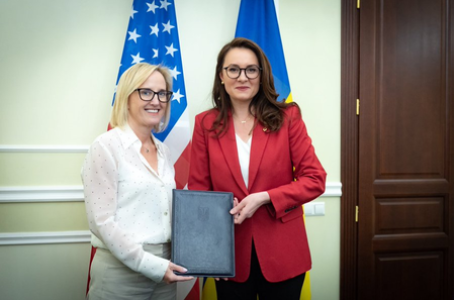
By GS Radhakrishna
Aug 14, 2020
Bangalore: After 20 years, communal tension has returned and gripped the laid out southern metropolis of Bengaluru.
on August 11, the miscreants targeted only three locations – house of local Dalit MLA A Srinivasa Murthy and his nephew, police stations of DJ halli and KG halli in Bangalore east within Pulakeshinagar assembly segment. CCTV footage’s of the incident telecast by local channels show that the mobs ransacked and torched only the vehicles and property at these three locations.
The immediate reason was a FB post by teenager Naveen, a nephew of local MLA, allegedly with derogatory comments on Prophet Mohammed. Now the family of Naveen claims that some miscreants snatched his mobile and shared the post while he was in market.
The FB post became viral and was spotted by other mobsters by evening (about 30 minutes later) and attacks followed after the local police allegedly refused to register a complaint against the teenager, as he was a political leader’s relative. Mobs said to be supporting the rival group hostile to the congress MLA, including two radical groups SDPI and PFI, indulged in mayhem which continued for three to four hours late into night at their chosen spots and was quelled after police arrived in large numbers and resorted to firing which led to the death of three protestors.
But the rioteers had by then ransacked the police stations, home of MLA and most of private and police vehicles within their reach and sight.
Karnataka Home Minister Basavaraj Bommai has said that even the police, reporters and public bystanders were attacked. ”We are collecting evidence and as per the recent verdict of Supreme Court the loss of public and private property caused by mobsters will be collected from them”, he said.
Police have filed two FIRs, arrested nearly 150 persons including SDPI local leader Muzamil Pasha, and the teenager nephew of MLA Naveen, says the Bangalore city police commissioner Kamal Pant.
What are SDPI and PFI ?
PFI, Popular front of India with slogan of Nava Karavan, is alleged to have extremist connections. The Social Democratic Party of India (SDPI) is said to be the political front of PFI. Both were involved in the violent protests of Mangalore on the CAA that killed two persons in police firing.
They were also noted in several protests for women’s rights- Jisha case of 2016, encounter killing of Tamil coolies by AP police in Red sanders smuggling case in 2015. The Karnataka BJP govt is keen to ban both outfits.
While local channels and social media is agog with exposures on the incident, police are piecing together the incidents of three pronged attack of Tuesday night in the Pulakeshinagar assembly constituency.
Some even allege that the violence was a pre-assembly polls strategy by rival groups opposed to the Dalit Legislator.” Strange that a minor issue led to such widespread violence by mobsters who came from nowhere with petrol bombs, iron rods and stones “ says a police official of DJ halli. Mobs ( mostly non locals ) occupied rooftops around police station and rained stones when Special police reinforcements arrived, he adds.
A look into a few communal riots of Bangalore.
Bangalore was the seat of power for the minority community which ruled the region for almost two centuries. The rule of Hyder Ali and Tipu Sultan followed by Kempe Gowda was popular for communal harmony. The Muslim community now dominating the East Bangalore region has been nourishing heart burns after losing most of its landed property to local Gowda, migrant Tamil Iyengars and Telugu Reddy and Naidu communities during last few decades.
As in Hyderabad, majority of the Muslim community of Bangalore are impoverished, earning livelihood through petty and menial jobs.There are some big business groups in real estate, jewellery, auto spares etc, but their reach is minimal.
According to 2011 census, the minority population in Bangalore is 13% touching almost 18% now . But over years, the city has also shown a big increase in migrant inflow from Odisha, Bihar, Uttar Pradesh, and Andhra Pradesh. More than 47,000 foreigners also have made Bangalore as their home. The Anglo Indian population has dwindled to just 10,000 from over 2 lakhs in 1960s , though Christians account for 6% of the city population today.
The city popularly known as garden city with cool Simla like weather for 10 months a year was a choice destination for rich and mighty from across entire Asia. Most of politicians, Army officers, industrialists and even administrators have invested in Bangalore with an effort to make it their last destination in life.
Earlier communal tensions
Bangalore witnessed communal tensions as early as 1928 when a Ganesh idol in a local school led to clashes and a student was killed in the incident popularly known then as Ganapathi Galabhe.
In December 1986, even more serious communal riots hit the state when an article published in the local daily Deccan Herald led to violent protests across the state claiming 17 lives. The issue was an article on Sabarimala with Muslim names including that of Prophet Mohammed written in News week edition of Hong Kong and reproduced by the local daily.
Further to this, another notable communal violence flared up n Bangalore on new year eve of 2000.Mobs attacked the New Indian express building, ransacked and torched the delivery vans carrying the newspaper and gheraoed the building for almost 24 hours.The cause was an article by editor TJS George. After 7 days of curfew, the issue was resolved with an apology in the newspaper.
Heart burns under BJP regime
It appears that the heart burns of the minority community were simmering ever since the BJP returned to power in Karnataka in 2019. Several acts of Yediyurappa government had allegedly hurt the sentiments of the minorities further crystallising the hard core elements.
The BSY regime had despite protests, cancelled the celebration of the Tipu Sultan festival which was apolitical and promoted communal harmony during Congress and JD regimes. The BJP govt in the state also earned the ire of the minority community on the CAA act as seen in Mangalore Incident.
During the COVID-19 spread In the state, the Tablighi community leaders of Padarayanapura in Bengaluru were targeted and put to public shame with arrests, raids on their homes and negative publicity on TV channels.
“ The government agencies including police blamed us for all ills of corona virus.But now thousands are testing corona + everywhere in South Zone and why don’t they blame the local migrants and BJP leadership there ? ” questioned a Muslim leader when this writer visited a local mosque near KJ halli police station on Wednesday .
A confidential report by the Karnataka intelligence department to Union home ministry indicates that the two police stations were obvious targets, perhaps due to presence of these policemen in the Covid-19 raids in Shivajinagar and other areas. It is a well known fact the community during Ramzan festival had ignored the Janata curfew and other COVID-19 restrictions blatantly inviting police interventions and lathicharges etc. The role of SDPI in Tuesday’s incident is also suspected.
What with the damage already caused to the economy – its pubs and tourist joints closure for four months – due to COVID-19 restrictions,the city once popular as a recreational hub for entire country now looking barren without nightlife and closure of liquor sale for three months .
The cascading impact will be on real estate, hospitality and IT industry and its tag as a cultural beehive of India as well.The BJP leadership of Karnataka and also nationally, should bear this in mind that communal tag could drive away foreign investors and the thriving IT industry too from Bengaluru.
—-India News Stream





